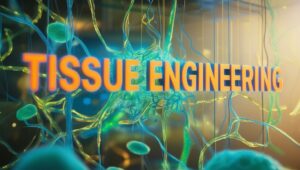So, you’ve heard the buzz about CRISPR-Cas9, the game-changing gene-editing tool. Maybe you’re wondering what all the fuss is about or how it works. Well, buckle up, because we’re diving into the world of CRISPR-Cas9 to uncover its revolutionary potential and what it means for the future of genetic engineering.
What is CRISPR-Cas9 and Why is it Special?
CRISPR-Cas9 stands for Clustered Regularly Interspaced Short Palindromic Repeats and it’s a gene-editing tool that allows scientists to precisely target and modify specific DNA sequences. Think of our DNA as a massive instruction manual containing the code for everything that makes us human. CRISPR-Cas9 acts like a super precise pair of scissors that can snip out faulty sections of this code and even insert new ones. This allows scientists to potentially correct genetic errors that cause diseases, modify crops for better yields, or even eliminate harmful viruses.
Here’s what makes CRISPR-Cas9 so special:
- Easy to Use: Unlike previous gene-editing methods, CRISPR is remarkably user-friendly. Imagine it like editing a document – you simply tell the system where to cut and paste, and it does the heavy lifting.
- Precise: With older techniques, making edits to DNA was a gamble. CRISPR-Cas9 offers much greater precision, targeting specific locations in the genome with minimal disruption.
- Affordable: The cost of gene editing has plummeted thanks to CRISPR, making it a more accessible tool for researchers worldwide.
How Does CRISPR-Cas9 Work?
CRISPR-Cas9 is inspired by a clever defense mechanism found in bacteria. These tiny organisms use a system called CRISPR (Clustered Regularly Interspaced Short Palindromic Repeats) to remember and fight off viruses. The system consists of two main components: a guide RNA (gRNA) and the Cas9 enzyme. The gRNA acts as a GPS, guiding the Cas9 enzyme to the desired location on the DNA strand. Once there, the Cas9 enzyme acts like a pair of molecular scissors, cutting the DNA at the specified site. This process allows scientists to remove, add, or alter genetic material with unprecedented accuracy and efficiency.
Here’s a simplified breakdown:
- The Code: Bacteria capture snippets of a virus’s DNA and store them like mugshots in their own DNA. This “wanted list” is called CRISPR.
- The Guide: When a familiar virus attacks, a molecule called Cas9 (CRISPR-associated protein 9) recognizes the matching viral code stored in the CRISPR library.
- The Cut: Cas9 acts like molecular scissors, snipping the invading virus’s DNA, effectively disarming it.
Scientists have adapted this system for our own purposes. They design a guide RNA molecule containing a sequence that matches the unwanted part of the DNA they want to edit. Cas9, armed with this guide, then cuts the DNA at that specific location. The cell’s natural repair mechanisms then kick in, allowing for insertion, deletion, or repair of the targeted DNA segment.
What is the History behind Development of CRISPR-Cas9?
The origins of CRISPR-Cas9 can be traced back to the immune systems of bacteria and archaea. These single-celled organisms use CRISPR-Cas9 as a defense mechanism against invading viruses. Over time, scientists have studied and adapted this natural system for use in gene editing.In 2013, researchers at the University of California, Berkeley, and the University of Vienna demonstrated the first successful use of CRISPR-Cas9 for gene editing in human cells. Since then, the technology has rapidly advanced, with scientists continuously refining and improving its accuracy and efficiency.
What are the Potential uses of CRISPR-Cas9?
The applications of CRISPR-Cas9 are vast and constantly evolving. Here are some exciting possibilities:
- Healthcare: One of the most exciting applications of CRISPR-Cas9 is in the field of medicine. Scientists are exploring ways to use this technology to treat genetic disorders, such as cystic fibrosis, Huntington’s disease, and sickle cell anemia. By correcting the underlying genetic mutations, CRISPR-Cas9 could potentially provide a cure for these debilitating conditions.Additionally, CRISPR-Cas9 is being investigated for its potential in cancer treatment. Researchers are studying ways to use the technology to target and eliminate cancer cells while leaving healthy cells unharmed.
- Agriculture: CRISPR-Cas9 also holds great promise for the agricultural sector. Scientists are using this tool to develop crops that are more resistant to pests, diseases, and environmental stresses. This could lead to increased food production and improved food security worldwide.Moreover, CRISPR-Cas9 is being used to create healthier and more nutritious crops by modifying their genetic makeup. For example, researchers have successfully used CRISPR-Cas9 to develop tomatoes with higher levels of antioxidants and potatoes with reduced levels of acrylamide, a potentially harmful compound that forms during high-temperature cooking.
- Basic Research: CRISPR-Cas9 has revolutionized basic research by providing scientists with a powerful tool to study gene function and understand the genetic basis of various traits and diseases. Researchers can now easily create genetically modified organisms, such as mice and zebrafish, to model human diseases and test potential treatments.
The Ethical Considerations of CRISPR-Cas9
While CRISPR-Cas9 holds immense potential, it also raises important ethical concerns that need to be addressed. One of the main concerns is the potential for misuse, such as the creation of “designer babies” with enhanced traits like intelligence or physical abilities.Another concern is the long-term consequences of germline editing, which involves modifying genes that can be passed on to future generations. There are fears that this could lead to unintended genetic changes that could have unforeseen effects on future generations.To address these concerns, various regulatory bodies and international organizations have been working to establish guidelines and policies for the responsible use of CRISPR-Cas9. These efforts aim to ensure that the technology is used ethically and for the benefit of humanity while minimizing potential risks and harms.
Real-life usage of CRISPR-Cas9
Let’s bring CRISPR-Cas9 down to Earth with some real-life stories:
- Saving Lives: In 2022, doctors in Boston used CRISPR-Cas9 to successfully treat a patient with a rare genetic disorder called Hunter syndrome. This marked a significant milestone in the journey toward personalized medicine.
- Feeding the Future: Scientists in the Netherlands are harnessing CRISPR-Cas9 to develop disease-resistant bananas, offering hope for sustainable agriculture in regions where this staple crop is under threat.
- Conservation Efforts: Conservationists explore using CRISPR-Cas9 to protect endangered species by mitigating threats like diseases and climate change-induced vulnerabilities.
As CRISPR-Cas9 continues to evolve and improve, its potential applications are likely to expand even further. Scientists are already exploring ways to use the technology to create more efficient biofuels, develop new materials, and even reverse the effects of aging. However, it’s important to note that CRISPR-Cas9 is still a relatively new technology, and there is still much to be learned about its long-term effects and potential risks. As with any powerful tool, it’s crucial that CRISPR-Cas9 is used responsibly and with a deep understanding of its implications.






